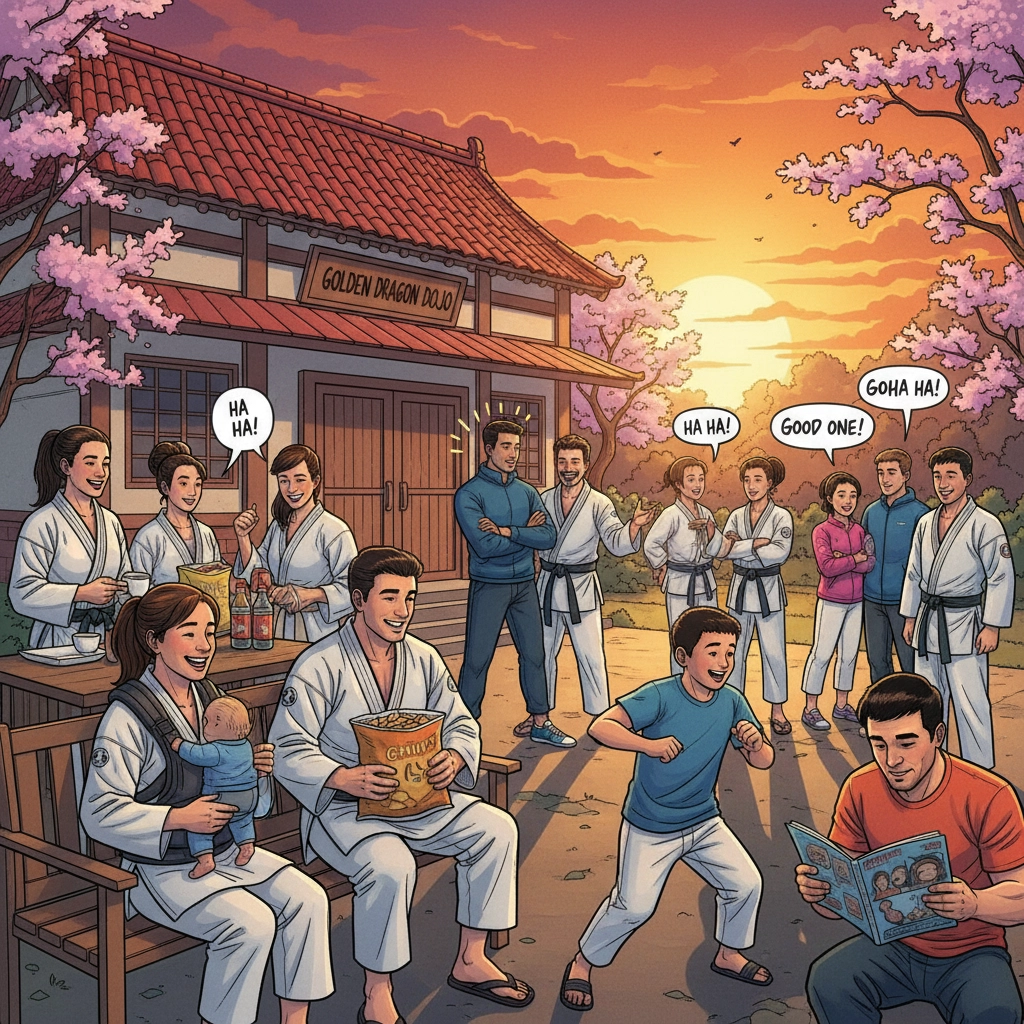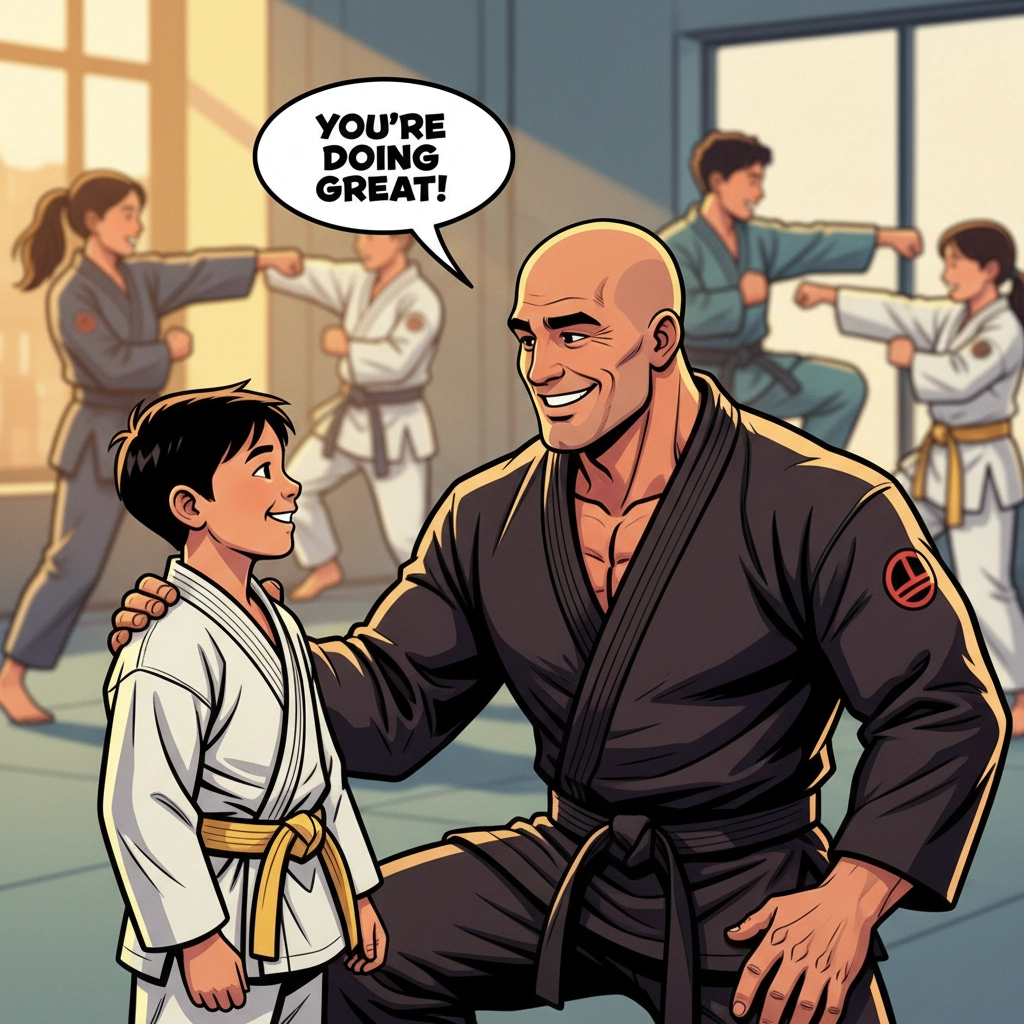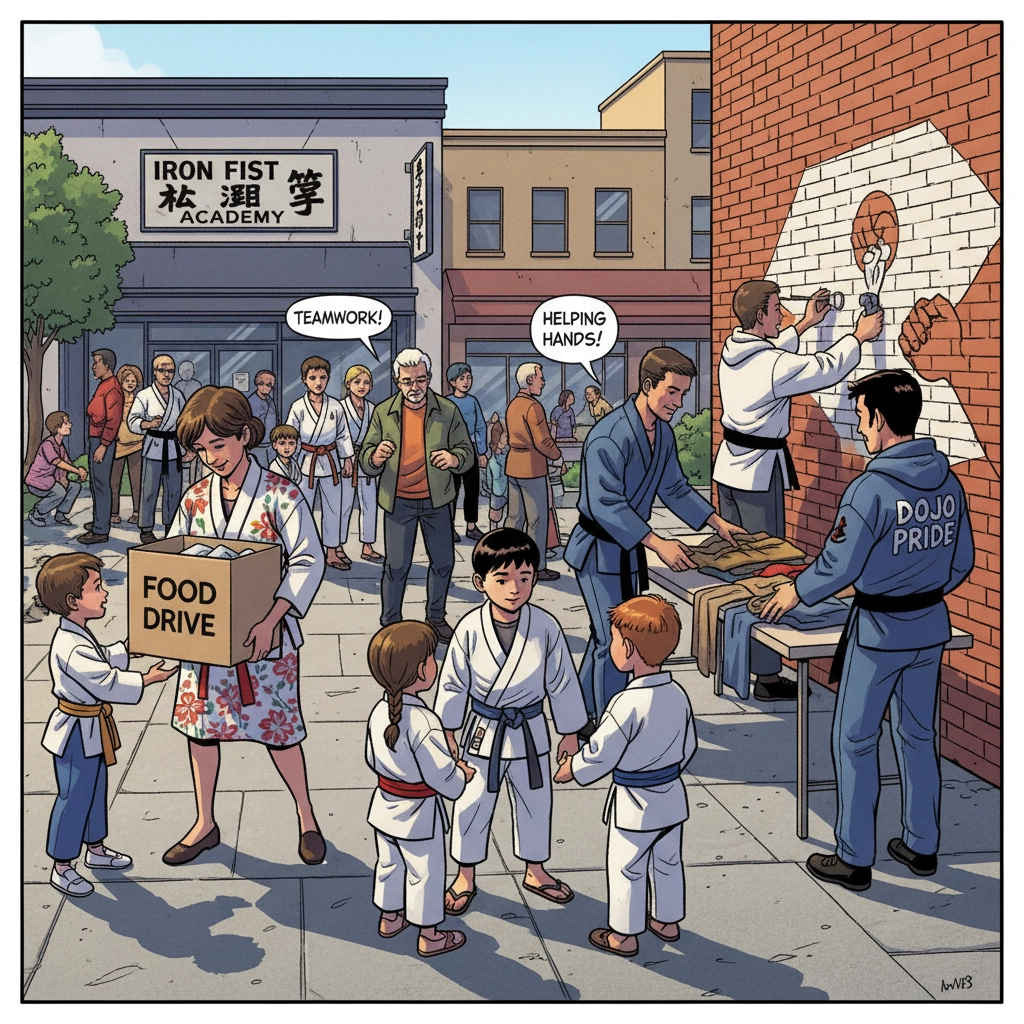Hey there, martial arts instructors! Running a successful school isn't just about teaching great techniques; it's about creating a community where students genuinely want to stay. You know that feeling when your school buzzes with energy, students support each other, and families become friends? That's what we're after.
Building a thriving martial arts community might seem overwhelming, but it doesn't have to be rocket science. We've broken it down into five straightforward steps that you can start implementing today. No complicated strategies or expensive programs: just practical, real-world advice that works.
Step 1: Get Crystal Clear on Your School's Identity
Before you can build anything meaningful, you need to know what you stand for. This isn't about writing some fancy mission statement that sits on your wall collecting dust. It's about defining the core values that drive everything you do.
Start by asking yourself: What makes your school different? Maybe you're all about traditional discipline and respect. You could focus on practical self-defense for real-world situations. Or you're the place where competitive fighters come to elevate their game.
Here's a practical example: If respect and humility are your core values, ensure they are consistently demonstrated. When a black belt helps a white belt with their form, acknowledge it publicly. When students bow properly before entering the mat, mention how it reflects the character you're building together. When these moments happen consistently, students start to see they're part of something bigger than just learning how to punch and kick.

Your values should guide how you handle everything from tardiness policies to tournament preparation. Students who feel connected to their school's identity develop loyalty that extends far beyond simply attending class.
Step 2: Master the Art of Making Everyone Feel Welcome
Walking into a martial arts school for the first time can be intimidating. New students are often nervous, parents are protective, and everyone's wondering if they'll fit in. Your job is to make that transition as smooth as possible.
Create a welcoming ritual that works every time. It could be having your most friendly advanced students introduce themselves to newcomers. It could be a quick school tour that shows off your community board or achievement wall. The key is consistency: every new person should feel the same warmth and support.
Here's something you can try today: Start a "buddy system" where experienced students are paired with newcomers for their first month. The buddy's job isn't to teach technique (that's yours), but to answer questions, help with gear, and make sure the new student doesn't feel lost.
Recognition is vast, but here's the trick: celebrate effort over natural talent. When you acknowledge the student who's been working for months to nail their first proper stance, you're showing everyone that hard work matters more than being naturally gifted. This creates an environment where everyone feels they can succeed.
Step 3: Bring Your Community Together Outside of Class
Training together builds bonds, but it's often what happens outside of formal instruction that turns classmates into genuine friends. You don't need elaborate events: simple gatherings work just as well.
Start with low-key social events. A monthly pizza night after Saturday classes costs almost nothing but gives families time to connect. Movie nights featuring classic martial arts films create shared experiences your students will remember for years. Holiday parties where everyone brings something to share build that family feeling you're after.

Here's a game-changer: organize community service projects. When your students volunteer together at a local food bank or help with a neighborhood cleanup, they're not just training partners anymore —they're teammates making a difference. Parents love seeing their kids involved in meaningful activities, and it strengthens your school's reputation in the broader community.
Family-friendly events are significant if you teach kids. When parents become friends with other families, they're much more likely to stick around long-term. Those relationships often outlast the martial arts training itself.
Step 4: Build Real Relationships with Your Students
The connection between instructor and student sets the tone for your entire community. Students need to trust you, respect you, and feel that you genuinely care about their progress —not just their monthly tuition payment.
This means learning names quickly, remembering personal details, and showing interest in your students' lives outside the dojo. When a student mentions they have a big test at school, follow up the next week to ask how it went. When someone's dealing with a family situation, acknowledge it and offer support.
Invest in your teaching team as well. If you have assistant instructors, make sure they understand that relationship-building is just as important as technique instruction. Run regular training sessions that cover not just martial arts skills, but communication techniques and conflict resolution.

Here's a practical tip: Keep simple notes about your students. Nothing fancy: just a basic file with personal details, goals, and progress notes. When you remember that Sarah's working toward competing in her first tournament or that Mike has been struggling with confidence issues, you can tailor your approach to meet each student where they are.
Step 5: Create Systems That Support Your Community
A thriving community requires a solid organizational foundation. Students and parents need to trust that you're professional, reliable, and have things under control. Billing mistakes, scheduling confusion, and communication breakdowns kill community trust faster than anything else.
Start with the basics: reliable attendance tracking, clear communication about schedule changes, and prompt responses to questions. Use technology to make things easier: simple scheduling software and automated reminders save you time and keep everyone informed.
Get involved in your local community beyond your school walls—partner with nearby businesses for cross-promotion. Offer free self-defense workshops at community centers or libraries, and sponsor local youth sports teams. When people in your area know and respect your school, it creates a positive feedback loop that strengthens your internal community.
Social media isn't just for marketing: use it to maintain connections between classes. Share photos from training sessions (with permission), celebrate student achievements, and keep the conversation going between in-person meetings.

Connect with other martial arts schools and instructors as well. The martial arts community extends beyond your four walls, and students appreciate being part of something larger. Consider organizing inter-school seminars or friendly competitions that build relationships across different schools.
Step 6: Put It All Into Action
Building a thriving martial arts community doesn't happen overnight, but every small step makes a difference. Start with one area where you can make the most significant impact, then gradually work on the others. This week, you can focus on greeting new students more warmly. Next week, you plan your first community event.
The secret is consistency. When students see that you're committed to building something special, they'll want to be part of it. They'll start inviting friends, families will become more involved, and before you know it, you've created something that goes way beyond martial arts instruction.
Remember, you're not just teaching techniques: you're building relationships, creating memories, and developing character. That's what keeps students coming back year after year, and that's what transforms a martial arts school into a true community.

At whistlekick, we understand that building strong martial arts communities is at the heart of what makes this journey memorable. We're here to support instructors like you with resources, connections, and the tools you need to create something amazing. Your community is unique, your students are counting on you, and with the right approach, you can build something that makes a real difference in people's lives.
Now get out there and start building something incredible!

